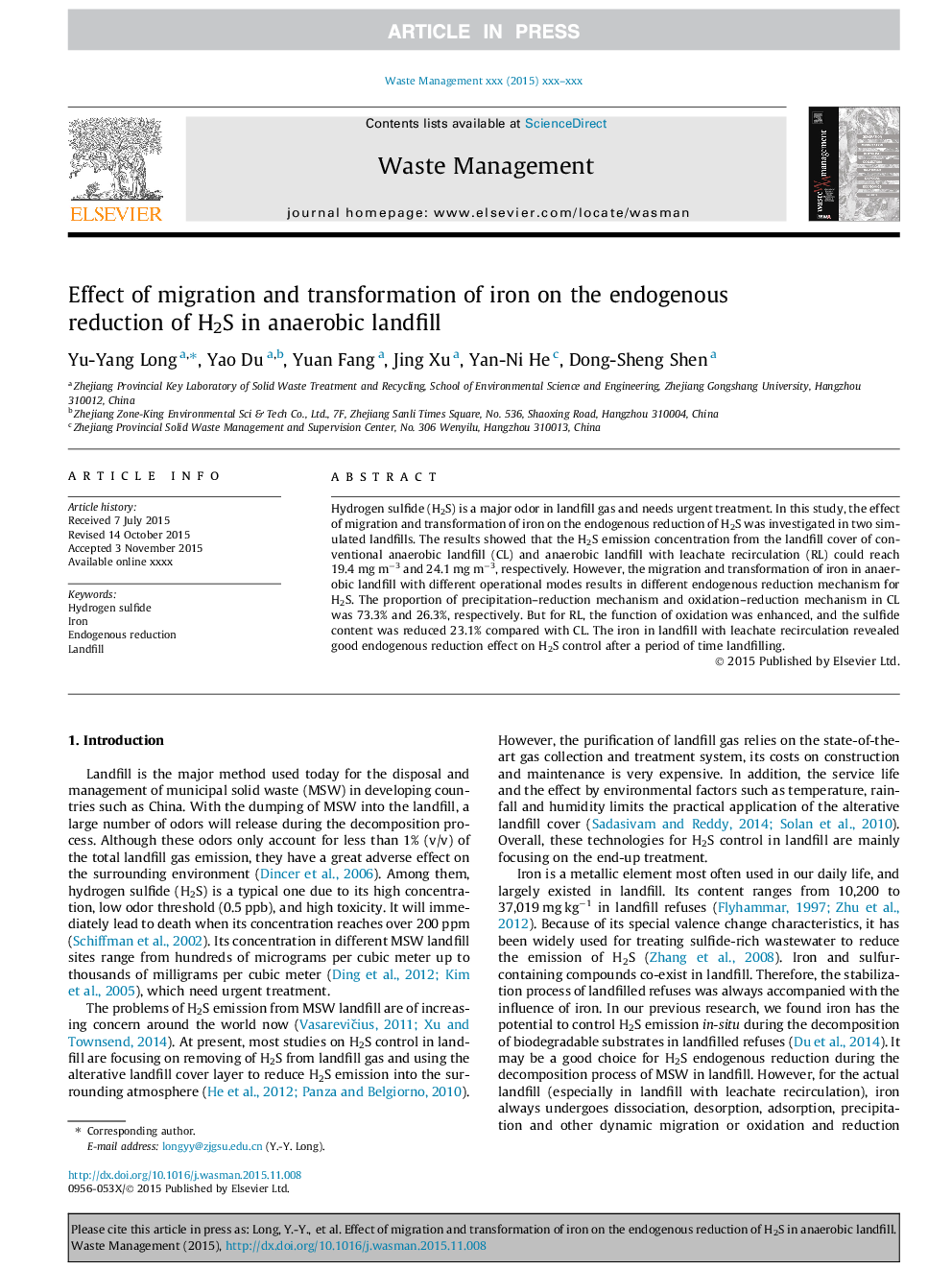| Article ID | Journal | Published Year | Pages | File Type |
|---|---|---|---|---|
| 6353569 | Waste Management | 2016 | 6 Pages |
Abstract
Hydrogen sulfide (H2S) is a major odor in landfill gas and needs urgent treatment. In this study, the effect of migration and transformation of iron on the endogenous reduction of H2S was investigated in two simulated landfills. The results showed that the H2S emission concentration from the landfill cover of conventional anaerobic landfill (CL) and anaerobic landfill with leachate recirculation (RL) could reach 19.4 mg mâ3 and 24.1 mg mâ3, respectively. However, the migration and transformation of iron in anaerobic landfill with different operational modes results in different endogenous reduction mechanism for H2S. The proportion of precipitation-reduction mechanism and oxidation-reduction mechanism in CL was 73.3% and 26.3%, respectively. But for RL, the function of oxidation was enhanced, and the sulfide content was reduced 23.1% compared with CL. The iron in landfill with leachate recirculation revealed good endogenous reduction effect on H2S control after a period of time landfilling.
Keywords
Related Topics
Physical Sciences and Engineering
Earth and Planetary Sciences
Geotechnical Engineering and Engineering Geology
Authors
Yu-Yang Long, Yao Du, Yuan Fang, Jing Xu, Yan-Ni He, Dong-Sheng Shen,
